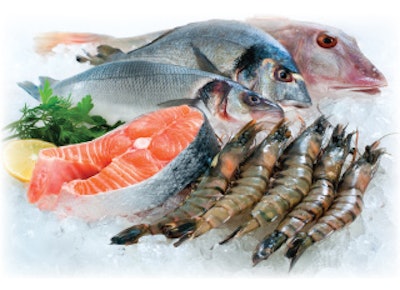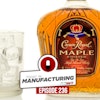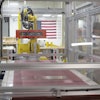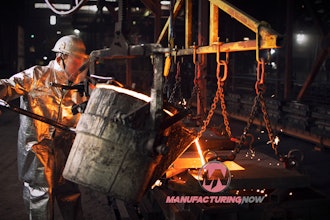
This article originally appeared in the March/April 2014 print issue of Food Manufacturing.
Northern Fish Products, Inc. in Tacoma, Wash., is the oldest seafood business operating in the Pacific Northwest. Throughout its 102-year history, the company has supplied fresh, quality fish and seafood throughout the United States and abroad.
“Our business is constantly evolving,” said Ross Swanes, vice president of Northern Fish and the fifth generation to work in the business. “What we did in the '40s, '50s and '60s is not what we did in the '80s and '90s. And it’s not what we do now.”
Among their modern practices, Northern Fish has implemented measures to cut cross contamination using ozone, as science and regulatory requirements have changed over the years. In addition, the company now finds itself in the storytelling business to satisfy consumers hungry for both fish and information about how it’s sourced.
From Humble Origins
Northern Fish began in 1912 when Johannes Swanes, a Norwegian immigrant, purchased the business and its assets — a horse and wagon — for fresh fish distribution. Now the company has an 80-employee Tacoma facility, and crab production plant in South Bend, Wash., as well as various unloading facilities. During peak production, the company employees about 150 workers.
Today, the company offers nearly a thousand different seafood items, including locally caught fish and exotic seafood from around the world. The business’s core products include Pacific Northwest items, such as salmon, halibut and crab. Imported products are sourced based on customer demand.
Approximately 50 percent of the company’s product is distributed throughout the Pacific Northwest, while the rest is shipped nationally and internationally. Depending on demand, about 10-20 percent of product is distributed globally.
Northern Fish’s Tacoma facility broke ground in 1972, with additions being made in 1991 and 2002. The Tacoma plant houses secondary processing, portioning, filleting and distribution operations, as well as the company’s smoking division.
Swanes says one of the biggest shifts for Northern Fish in the last 30 years is the switch from direct store distribution to broadline foodservice programs. The company also distributes product to independent specialty stores, as well as to restaurants outside of the Pacific Northwest through its Direct-to-Chef program, which allows chefs to order fresh fish and have it quickly delivered to their business.
Swanes says that the growing opportunity for independent seafood markets also has impacted the business. Northern Fish operates multiple standalone seafood stores that work with local fishermen.
“It’s been really successful for us,” Swanes says.
Making the Cut
Each day at the Tacoma plant begins with a morning production meeting, where the staff checks product inventory and lays out the production schedule for the day.
“It’s a big puzzle every morning, but it all starts with making your calls to our own operating companies or our partners to see what’s available and to see what’s coming,” Swanes says.
Scheduling can be a challenge because Northern Fish processes a large amount of just-in-time product that must be delivered fresh.
Northern Fish focuses on providing highly customized product, so all product is cut to order. “We strike the balance of cutting a lot of product, but having a lot of specifications,” Swanes says.
Workers at the Tacoma facility skin and cut thousands of fillets per day — all by hand. Workers must ensure that portions are cut identically for each order. Only 10 to 12 highly trained employees cut portions for Northern Fish, and all of them have at least 10 years of cutting experience.
Once the product is portioned, it is placed in packaging that reduces the oxygen transmission rate (OTR), the amount of oxygen that passes through the product, to increase shelf life. Packaged product is shipped surrounded by ice to keep the product cold and held tightly together.
Staying Ahead of the Safety Game with Ozone
Food safety is always a concern, no matter the food product, but seafood processors face particular scrutiny due to the fresh, animal-based nature of their product. Swanes says Northern Fish helps ensure compliance with good manufacturing practices (GMP) by constantly being aware of “critical touch points.”
The implementation of ozone technology at both the South Bend crab facility and the Tacoma plant has helped Northern Fish reduce the risk of cross -ontamination, as well as extend the shelf life of its products.
“With ozone technology and continuous sanitation, we’re able to turn those touch points into sanitation points,” Swanes says. “You have an opportunity to make a product better and even safer for the consumer.”
Ozone, a highly reactive form of oxygen that consists of three oxygen atoms, is a potent antimicrobial agent that can be used to effectively kill bacteria, viruses, fungi and parasites. Ozone reacts with oxidizeable cellular components of microorganisms, which damages the cells and ultimately results in the death of microorganisms.
While other sanitizing agents like chlorine have been used prevalently throughout the food industry, more and more processors are choosing to use ozone because it effectively kills microorganisms without leaving harmful residues in treated product.
To utilize ozone technology, processors generate ozone gas in their facilities. The gas is then pumped into water, and the ozonated water is used as a rinse or spray to decontaminate food-contact surfaces and sanitize equipment, as well as disinfect the food product itself.
Northern Fish installed ozone hookups for overhead sprayers throughout the Tacoma facility, so the crew can perform washdowns at all critical points during the filleting process. On portioning lines at the Tacoma plant, fillets and whole fish are treated with ozone at least three times as they make their way through the building.
The Quality Assurance department performs swab tests on both product and contact surfaces multiple times per week as an added precaution to ensure no contamination is occurring. Swanes says these measures help keep Northern Fish well ahead of regulatory food safety requirements.
“There are very few regulations that have come into place that have surprised us because a lot of our customers demand even more robust audits, ” he says.
Telling the Story of Seafood
Sustainable seafood is becoming increasingly popular with consumers. But the meaning of “sustainable” can vary from person to person, creating a challenge for seafood producers like Northern Fish.
“For some people, sustainable means local. For some people, sustainable means only wild-caught,” Swanes explains. “It’s fun to sell fish because it always creates conversations. Where did my fish come from? Who caught it? How did it get here?”
Swanes says he often recommends that customers who are new to seafood consult programs like the Monterey Bay Aquarium Seafood Watch, which identifies which seafood items are “Best Choices, “Good Alternatives” and ones shoppers should “Avoid,” based on scientific information and ecosystem-based data. Swanes says lists like this are a good starting point for further discussion.
Food fraud also is an area of concern at both the restaurant and retail level. Northern Fish has traceability systems in place that allow the company to trace its product down to the case.
To further ensure the authenticity of its products, Northern Fish systematically utilizes third party testing, including regular testing of imported product.
Other challenges faced by seafood processors like Northern Fish include scarcity of supply and rising prices, as well as consumer fears of cooking with seafood.
“People don’t have a lot of money to spend on fish, and people are a bit mystified on how to cook it,” Swanes says. “[Northern Fish] promotes fish that people have never thought to cook. It’s constant education.”
Swanes says he enjoys being able to tell customers the story of their seafood from catch to case.
“Every day when I make my phone calls and ask what was caught today, every day is an opportunity to tell a new story. It’s fun.”
For more food industry news and information, subscribe here and follow us on Twitter, Facebook or LinkedIn.



















